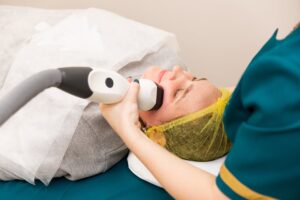
It’s easy to overlook our dental health when we don’t feel like anything is wrong, but sometimes the more subtle signs of a problem are overlooked until it has come to a point where these problems can no longer be ignored. Even if you take good care of your oral hygiene and still pay regular visits to the dentist, it doesn’t mean that everything is status quo in between those check-ups. Take toothache for example – this isn’t something that should be taken lightly as even just a mild ache could potentially signify the start of decay or worse. In this blog post, we will discuss three subtle signs which indicate it’s time for you to schedule an appointment with your dentist for further investigation!
Sensitivity to Hot and Cold Beverages
Sensitivity to hot and cold beverages can be a common issue for many people. It is a condition that can cause discomfort when drinking hot and cold drinks, such as tea and coffee. This can be caused by damage to the sensory nerves in the mouth and throat, or an overreaction of the immune system.
The most common symptom of sensitivity to hot and cold beverages is pain or burning when drinking hot or cold drinks. Other symptoms may include a tingling or numb feeling in the mouth and throat, or a metallic taste. Some people may also experience a tightening sensation in their throat or difficulty swallowing.
When it comes to diagnosing sensitivity to hot and cold beverages, a doctor may ask questions about your symptoms, examine your mouth and throat, and possibly perform a physical exam. They may also order additional tests such as x-rays or blood tests to rule out other causes.
Fortunately, there are a few things that you can do to reduce your sensitivity to hot and cold beverages. Start by avoiding temperature extremes, such as drinking iced beverages or hot coffee. You can also try drinking through a straw, as this can help reduce the amount of contact between the beverage and your mouth. Additionally, you may find relief from mouthwashes and other products specifically designed to soothe sensitive oral tissues.
Sensitivity to hot and cold beverages can be an unpleasant condition but there are ways to manage it. Avoiding temperature extremes and using strategies such as drinking through a straw can help reduce discomfort and improve your quality of life. It’s also important to speak with your doctor if you’re experiencing any discomfort or other symptoms.
Persistent bad Breath Even After Brushing Your Teeth
Persistent bad breath, even after brushing your teeth, can be a sign of an underlying oral health concern and should be addressed. Bad breath, also known as halitosis, is a common problem that can be caused by a variety of factors.
The most common cause is poor dental hygiene, as bacteria left in the mouth after meals can quickly accumulate and cause an unpleasant odor. Poor oral hygiene can also lead to gum disease, which can cause an increase in bacteria and lead to bad breath. Additionally, smoking and drinking alcohol are known to contribute to bad breath and should be avoided.
If you are brushing and flossing regularly and still experiencing bad breath, your dentist may recommend a more thorough cleaning to remove any built-up bacteria or plaque. This can help reduce the odor and keep your breath fresh and clean. Your dentist may also suggest a mouthwash or other products to help with the problem.
In some cases, persistent bad breath can be a sign of an underlying medical condition such as diabetes, kidney or liver disease, or gastroesophageal reflux disease (GERD). If you are experiencing persistent bad breath, it is important to speak to your doctor as they may be able to identify the cause and recommend treatment.
No matter the cause, persistent bad breath can be embarrassing and unpleasant. If you are experiencing bad breath, speak with your dentist or doctor right away to get to the bottom of the problem. With proper oral hygiene and medical treatment, you can get your breath smelling fresh and clean again.
Visible Discoloration on the Teeth or Gums
Visible discoloration on the teeth or gums is something that many people have to deal with at some point in their lives. This discoloration can be caused by a number of factors, including dental hygiene, certain medications, and certain medical conditions. Whatever the cause, it is important to take steps to address it in order to maintain a healthy smile.
When it comes to visible discoloration on the teeth or gums, one of the most common causes is poor dental hygiene. When the teeth and gums are not brushed and flossed on a regular basis, food particles can build up and cause discoloration. This discoloration is typically yellow or brown in color, and may appear on the surface of the teeth, or on the gums. Proper brushing and flossing at least twice a day can help to reduce the discoloration.
Certain medications can also result in discoloration of the teeth or gums. Antibiotics, antihistamines, and even some antacids can cause discoloration, so it’s important to speak to your doctor or dentist about any potential side effects. Additionally, some medical conditions such as diabetes and HIV can also cause discoloration, so it’s important to have regular check-ups to ensure your overall health.
Thankfully, there are a variety of treatments available to help address discoloration on the teeth or gums. Professional tooth whitening treatments, as well as over-the-counter products, can help to reduce discoloration. Additionally, certain lifestyle changes, such as reducing sugary drinks or quitting smoking, can also help.
Visible discoloration on the teeth or gums can be a sign of poor dental hygiene, certain medications, or certain medical conditions. Thankfully, there are a variety of treatments available to help reduce discoloration and maintain a healthy smile. By speaking to your doctor or dentist, and making the necessary lifestyle changes, you can help to reduce discoloration and maintain your oral health.

